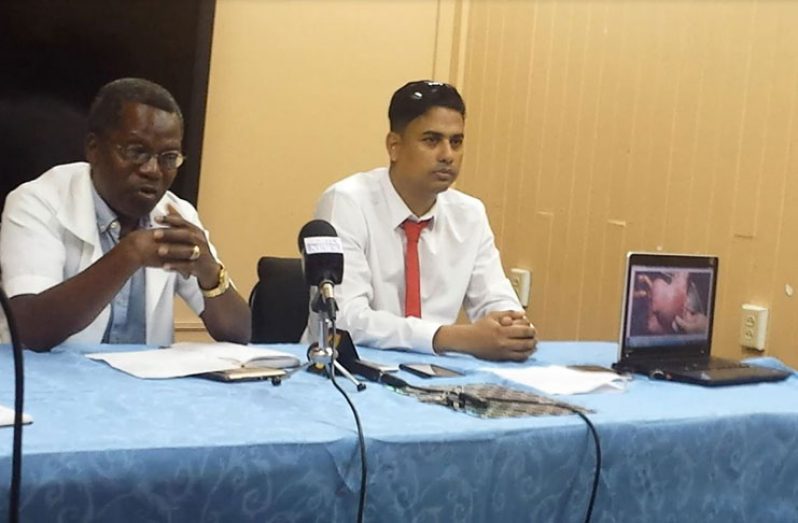AMIDST allegations of negligence by its medical, nursing and administrative staff, the Georgetown Public Hospital (GPH) on July 25 last made history when gynaecologists at the institution successfully took a 20-year-old mother through one of the most complicated deliveries ever – Didelphys or double-uteri pregnancy.
And what’s more, the young mother with the uterine abnormality was found to have two wombs and two cervixes and gave birth to two healthy, full-term babies at 37 weeks gestation in a caesarean section procedure that lasted just 35 minutes.
The consultant in charge of the case was Dr. Lucio Pedro, while Dr.Rafi Rozan performed the deliveries assisted by Dr. Latchmi Nandalal.
The case, Dr. Rozan told journalists at a media briefing last Thursday, was that the mother had abnormal embryological development of the mullerian ducts. It was the first such case recorded locally, with global statistics being one in a million.
A didelphic uterus is a type of congenital uterine malformation which manifests itself in the formation of two uteri, two cervixes and sometimes even two vaginas, which was not so in this case.
The abnormalities alluded to, Dr. Rozan said, can result in failure of development, fusion, canalisation or reabsorption, which normally occur between six to 22 weeks. But thankfully, the babies born at the GPH were full-term and of 37weeks gestation.
Elated over this recent success for the GPH, Dr. Lucio Pedro told journalists: “The patient was a nulliparous (not having given birth previously). She had full-term, twin pregnancy of a baby boy in the right cavity and a baby girl in the left cavity. Both were delivered healthy with no maternal or neo-natal complications.
Dr. Pedro concluded: “The incidence of having a didelphys uterus with twin gestation (one in each independent cavity of different sex) and successfully delivering at term is like winning a one-in-a-million Mega lottery.
And for Dr. Rozan, at no time was he fearful. It was a moment of great excitement, he recalled, and full of confidence he kept his composure, applying all the skills necessary to ensure both mother and babies were brought safely through. Asked what signs did the mother experience which would have told her that something was amiss, the doctors explained that most women with a didelphys uterus were asymptomatic (do not experience any symptoms).
And how does a woman end up with two wombs?
Scientificamerican.com explains that in the embryonic stage of human development, a female has more than one “uterine horn” or tubes that ultimately fuse into one uterus. In people with this condition, somewhere in the developmental process, the tubes didn’t come together, most likely because there was an error in the signals cells received instructing them to migrate to certain places.


.jpg)











